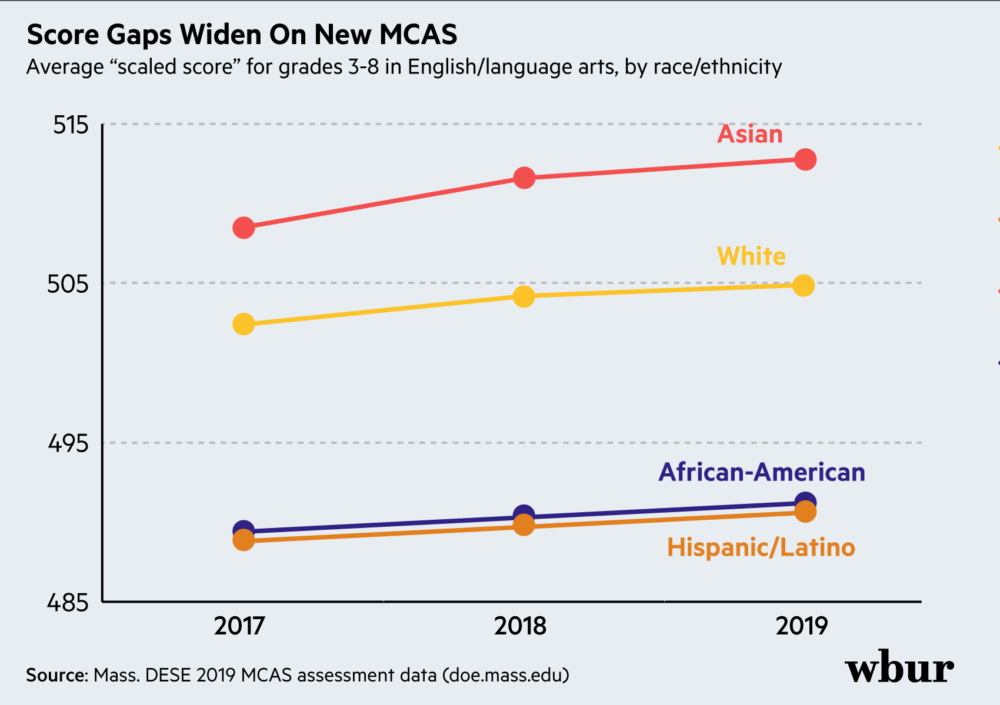Advertisement
Latest Scores On New State Test Show Some Improvement — But Racial Gaps Remain
For the first time last spring, nearly all Massachusetts students tangled with the “next-generation” MCAS test, a computer-based assessment designed to better predict how students will fare in college and the workforce.
On Tuesday, the state Department of Elementary and Secondary Education (DESE) published scores from this spring's exams — and the ranking of schools on their performance.
This was the first year in which state 10th graders took the new, more rigorous exam as a graduation requirement, and 74% earned a qualifying score on the first attempt — the same percentage as passed the "legacy" test in the year prior.
Meanwhile, students in grades third through eighth have been taking the new test since 2017, and they’re getting better. On the English/language arts test, their average ‘scaled score’ — weighted to facilitate comparisons — has climbed by 2.2 points on average since 2017. The average score on the math section is up by a more modest 0.4 points.
But as in so many things in public education, the improvement is unevenly distributed.
The DESE data show that, on the English/language arts test, the scores of Asian American and white grade-schoolers are improving more quickly than those of their African American and Latino peers. And Asian American students are improving more quickly than all three other groups in math.

Jeff Riley, the state’s education commissioner since 2018, acknowledged once again that though Massachusetts public schools are often ranked first in the nation for academic excellence, “we’re only No. 1 for some, and major achievement gaps still exist.”
Riley said he isn’t resigned to those gaps, which have endured for decades, as an inevitable consequence of a school system segregated by race, language and income. He cited his own experience as the state-appointed receiver overseeing the Lawrence school district — which is predominantly low-income and Latino, and where studies show some marked academic improvements during his tenure.
Riley said he and his team at DESE will work “in the next few years” to tackle the gaps on display in this year’s scores. He mentioned a new statewide push to recruit teachers of color, who can make measurable differences in the educational outcomes of black and Latino students. (Staffing data from the past school year show that teachers of color make up only around 8% of the state’s overall corps, while nearly 40% of the students are black, Latino or Asian.)
Advertisement
As they did last year, state officials declined to label any additional schools as “under-performing” this year, based on low scores on this new test. That label serves as a prelude to state takeover. And two schools — Channing Elementary in Boston and Duggan Academy in Springfield — managed to shed the label in the latest accountability report.
But Riley denied that DESE has lost its will to intervene in struggling schools. As the new assessment only arrived in high schools this year, Riley said, “we’re just giving folks a little bit of breathing room.”
Meanwhile, eight public schools in Boston — including three open-enrollment high schools, Henry Grew Elementary and Madison Park Vocational High School — remain on the state watchlist for schools “in need of broad/comprehensive support" — the lowest tier in the state's new rubric.
